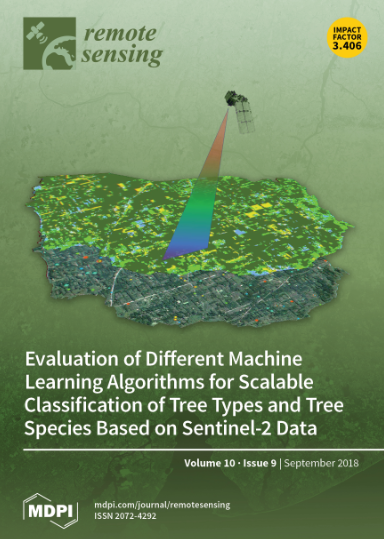Development of a Background Filtering Algorithm to Improve the Accuracy of Determining Underground Cavities Using Multi-Channel Ground-Penetrating Radar and Deep Learning
IF 4.1
2区 地球科学
Q2 ENVIRONMENTAL SCIENCES
引用次数: 0
Abstract
In the process of using multi-channel ground-penetrating radar (GPR) for underground cavity exploration, the acquired 3D data include reflection data from underground cavities or various underground objects (structures). Reflection data from unspecified structures can interfere with the identification process of underground cavities. This study aims to identify underground cavities using a C-GAN model with an applied ResBlock technique. This deep learning model demonstrates excellent performance in the image domain and can automatically classify the presence of cavities by analyzing 3D GPR data, including reflection waveforms (A-scan), cross-sectional views (B-scan), and plan views (C-scan) measured from the ground under roads. To maximize the performance of the C-GAN model, a background filtering algorithm (BFA) was developed and applied to enhance the visibility and clarity of underground cavities. To verify the performance of the developed BFA, 3D data collected from roads in Seoul, Republic of Korea, using 3D GPR equipment were transformed, and the C-GAN model was applied. As a result, it was confirmed that the recall, an indicator of cavity prediction, improved by approximately 1.15 times compared to when the BFA was not applied. This signifies the verification of the effectiveness of the BFA. This study developed a special algorithm to distinguish underground cavities. This means that in the future, not only the advancement of separate equipment and systems but also the development of specific algorithms can contribute to the cavity exploration process.开发背景过滤算法,利用多通道探地雷达和深度学习提高地下空洞探测精度
在使用多通道探地雷达(GPR)进行地下空洞探测的过程中,获取的三维数据包括来自地下空洞或各种地下物体(结构)的反射数据。来自不明结构的反射数据会干扰地下空洞的识别过程。本研究旨在利用 C-GAN 模型和 ResBlock 技术识别地下空洞。该深度学习模型在图像域表现出卓越的性能,可通过分析三维 GPR 数据(包括从道路下方地面测量的反射波形(A 扫描)、横截面视图(B 扫描)和平面视图(C 扫描))自动对空洞的存在进行分类。为了最大限度地提高 C-GAN 模型的性能,开发并应用了背景过滤算法 (BFA),以提高地下空洞的可见度和清晰度。为了验证所开发的 BFA 的性能,使用三维 GPR 设备对从大韩民国首尔道路采集的三维数据进行了转换,并应用了 C-GAN 模型。结果证实,作为空洞预测指标的召回率比未应用 BFA 时提高了约 1.15 倍。这证明了 BFA 的有效性。这项研究开发了一种特殊算法来区分地下蛀洞。这意味着,未来不仅要提高独立设备和系统的水平,还要开发特定的算法,为空洞勘探过程做出贡献。
本文章由计算机程序翻译,如有差异,请以英文原文为准。
求助全文
约1分钟内获得全文
求助全文
来源期刊

Remote Sensing
REMOTE SENSING-
CiteScore
8.30
自引率
24.00%
发文量
5435
审稿时长
20.66 days
期刊介绍:
Remote Sensing (ISSN 2072-4292) publishes regular research papers, reviews, letters and communications covering all aspects of the remote sensing process, from instrument design and signal processing to the retrieval of geophysical parameters and their application in geosciences. Our aim is to encourage scientists to publish experimental, theoretical and computational results in as much detail as possible so that results can be easily reproduced. There is no restriction on the length of the papers. The full experimental details must be provided so that the results can be reproduced.
 求助内容:
求助内容: 应助结果提醒方式:
应助结果提醒方式:


